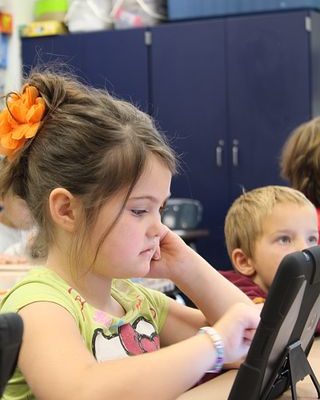How to Use E-Portfolios in the Classroom

Students have made portfolios for classrooms of various kinds for many reasons over the last few decades. In the past, the teacher was the only person other than the student really to see their portfolio, unless it is posted in a display somewhere in the classroom. Now, there is an easy way to create and share portfolios electronically in a classroom. These e-portfolios are becoming more and more popular, and they have created a paradigm shift in education recently. E-portfolios are becoming the perfect way to collect, share, collaborate, and grade assignments in most classrooms.
The first thing to do is to define the needs of a classroom. There are several questions to ask, including the following:
- Can student work be made public?
- Can students view and comment on each other’s work?
- Can the teacher provide feedback for the student privately?
- Are the portfolios transferable from year to year as students move through the school?
- Can students access their work or export it when they leave the school?
- Does the platform allow for multiple file types (documents, sound files, video files)?
- What are the costs for using the tool or platform?
- Can a teacher create a teacher account and student accounts, or do students sign up on their own? Is there a minimum age to sign up?
These questions are of the utmost importance when deciding to go with an e-portfolio option in the classroom. If e-portfolios are the right choice for a classroom, then it is time to decide between which services to use for the process, and there are several to pick from.
Project Foundry
Project Foundry works great as an e-portfolio option because of how it organizes, tracks, and shares project-based learning experiences. It also relates projects back to standards for the sake of grading. Plus, it has built-in feedback tools. This option is less for sharing with all students, though. It is more of a platform for students to turn in their work to a teacher.
Google Apps
Google hosts many apps that can function perfectly for making all types of e-portfolios. It has an entire office suite accessible for free, and it comes with an email address and cloud storage, too. The reason why Google’s apps work the best is that the files can be turned into teachers for grading, or it can be sent to other students for viewing and feedback. Documents can be shared as read-only or as editing allowed, so the options are endless for student interaction.
Dropbox
Dropbox is another great file sharing service that allows students to collaborate to one another and to share their files with their teachers, too. It lacks the office suite items that Google’s apps offer, though.
Next Steps
Once a service is chosen, and the ones mentioned here are only samples of the many that are available for using online, most of which are free, then the next step is implementing these tools into the classroom. The first step is to make sure the teacher is familiar with the product first. This step needs to happen before any others because the teacher needs to eventually teach their students how to use these programs and apps for the classroom, too. Simple assignments can be given that lead student around each area of how to use the tool being used.
Then, the larger portfolio can begin to be made. The best way to start building a portfolio is step-by-step, first starting with small assignments that then grow into a larger piece. Students should be encouraged to share with one another if the product allows such things so that feedback can be given. Teachers should be able to check in on the e-portfolio’s progress from time to time to make sure that students are on track. When it comes to the final submission, students should be certain they want the final product to be left as it is for all time. Along the way, though, creativity should be promoted above all else.
Conclusion
E-portfolios are becoming the next step in education for how assignments will work in the future. Technology is to thank for this paradigm shift, and students are bound to love doing e-portfolios more than any other kind of work because it allows them to interact with their beloved technology. Classrooms using e-portfolios are sure to blossom into a realm of collaboration and creativity that fosters learning above anything else.






